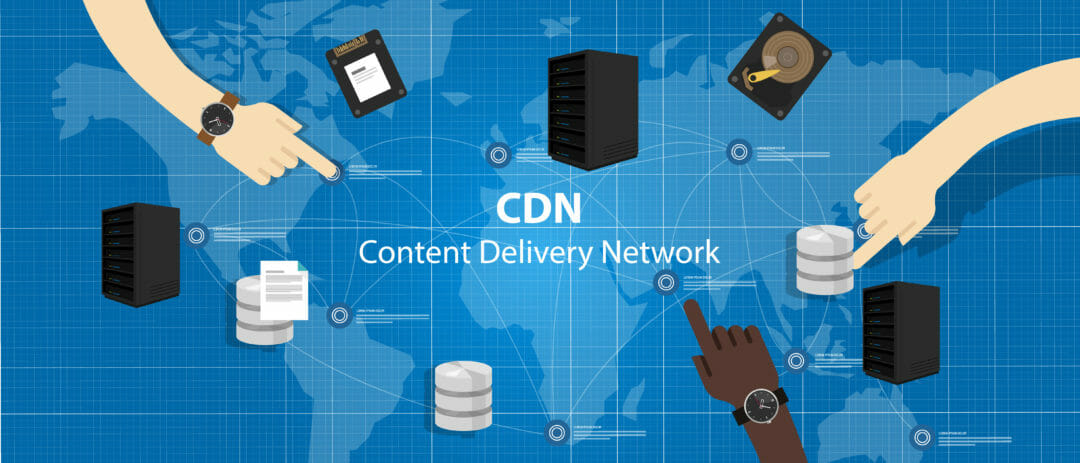A content delivery network (CDN) is one of the key assets in helping companies to improve their online user experience. Delivering compelling online experiences quickly and reliably is a complex challenge for any content-rich online service. Whether it’s videos, music, software or games, the commercial success of any web offering depends on a positive consumer experience.
When delivering online video, poor performance can frustrate users and potential customers, causing many to leave the streaming site or abandon online purchases. According to Limelight Networks‘ State of Online Video 2019, almost half of users left a website with a loading time of more than five seconds. Around 43% of those surveyed even left the website altogether to use a competitor site instead.
To ensure users experience a high-quality service, there are six key aspects a CDN can provide. This includes a cache capacity, latency, bandwidth, availability, reach and security.
1. Increase performance holistically
Many companies judge the performance of a website primarily by its loading speed. While the speed of the website is a crucial component in the performance of a website, there are other key factors that influence the function and customer’s experience of a website. Important metrics for video delivery includes the re-buffer rate, bit rate and initial load time. Therefore, it is important for a good network provider to optimise several performance parameters in order to provide content in the best possible way, regardless of location or the terminal device used.
2. Performing content audits
Most websites consist of a mix of static and dynamic content, as well as small and large objects, such as videos. An audit can provide information about possible content bottlenecks, enabling businesses to find ways to resolve them which can help streamline workflows and lead to better customer engagement. The audit of a mobile website, for example, may reveal that it updates numerous dynamic thumbnails each time it is queried. This results in a back and forth between the website and origin. The system becomes overloaded and delivery is delayed. This knowledge can help CDN providers strategise to find the best solution in ensuring high quality video content is delivered.
How HSBC has helped its customers through the pandemic in the UK
3. Intelligent caching and retrieval
Many providers store frequently requested content at different network edges for faster delivery. But it’s still important that less frequently requested content is retrieved quickly when needed. If information is not in the cache, it must be retrieved from the storage hierarchy or Origin storage. A good network, therefore, uses intelligent caching software and hierarchical caching techniques which can reduce the number of times the Origin is accessed for an improved content delivery.
4. Optimise Origin storage
The choice you make on the kind of storage and where it can place your content has a direct impact on the performance of your digital experiences. When the structure of the Origin storage is neglected, it can directly affect the workflow and make it difficult to manage large libraries. Inefficient selection of storage locations and slow transmission can delay content delivery and have a negative impact on the end user’s experience.
With Origin storage designed to handle requests, content can be better managed with automation and intelligent services. For instance, companies can better control their videos, games or music and better manage where and how they are fed, stored, replicated and delivered. Solutions that enable automatic multi-regional replication of files are recommended for faster retrieval, a film or game is thus automatically delivered from the fastest available storage location.
Flash storage disaggregation: NVMe/TCP key to more effective utilisation?
5. Private instead of public
When selecting a CDN, a key consideration is if they will carry your content over public internet or private network bandwidth. Many providers rely on the public internet connection for online content delivery or use many intermediate stations (hops) to transfer data packets to the last-mile provider. However, with it brings unpredictable bottlenecks, performance degradation, latency and packet loss that can affect delivery.
Companies should therefore select networks with a private, quality-of-service (QoS)-enabled backbone. Connections that go over a private network offer more reliability and flexibility at a faster rate to a global audience compared to the public internet. Also, they often have high-performance points of presence (PoPs) located in various internet hubs around the world, which rely on peering agreements with all major internet service providers. This is important as big ISPs and transit providers usually peer with their equivalents, because exchanging traffic with major players enables them to save on transit costs and leverage better routes. CDNs, however, have open peering policies and can reap the same rewards as ISPs. As a result, customers enjoy the highest levels of network performance and end users are provided with the best possible experience.
6. Security
Security is another crucial consideration. In light of the increasing internet risks, online providers need cloud services for a multi-layered defence against cyber attacks. They need to be able to differentiate between legitimate and non-legitimate content requests and filter out malicious traffic. A strong network fends off threats without generating new latencies or impairing the performance of web applications and the delivery of content.
How can vendors and end users ensure cloud security?
With the shift to online, there are more CDN providers than ever and it can be harder to choose the right one to align with your business goals. Today, an online presence is a vital component for a successful business. The online resources that businesses can offer, whether they are video games, movies or a website, are often at the forefront of a business and house information relevant to customers. It’s important that this online content is delivered at the speed and quality that customers expect and choosing the right CDN provider is a key step to providing them with the best online experience.











